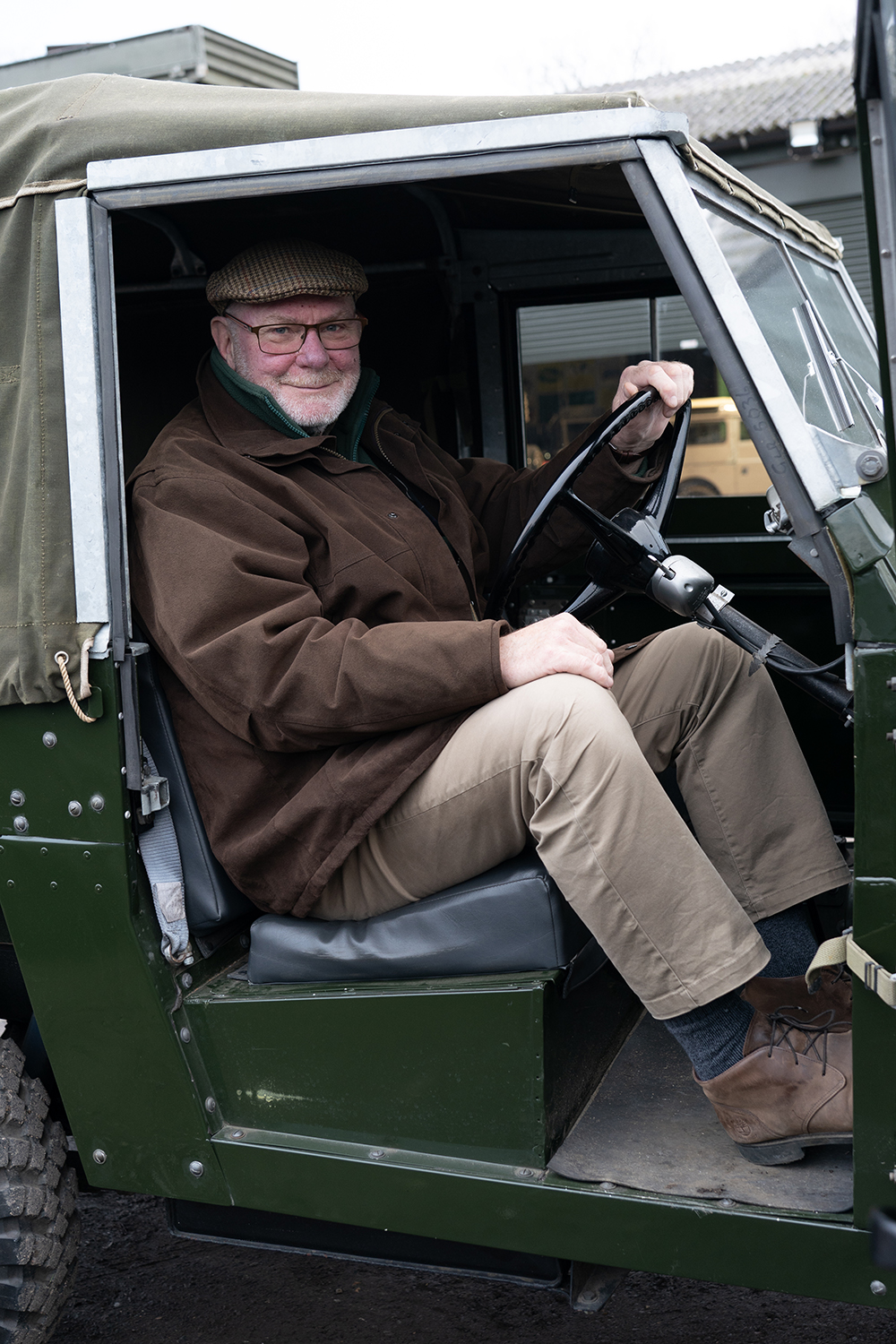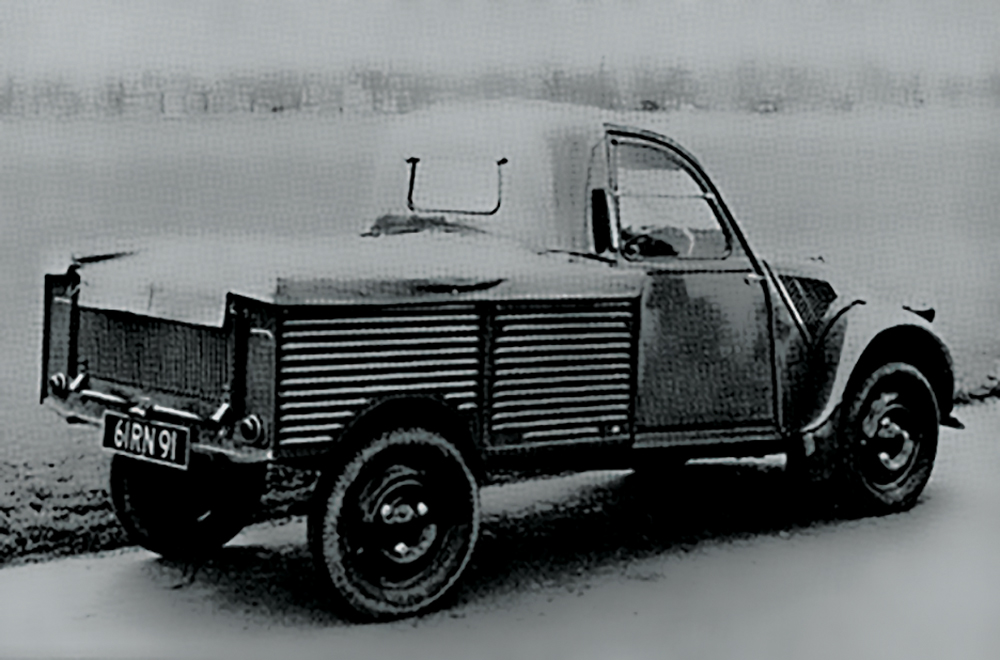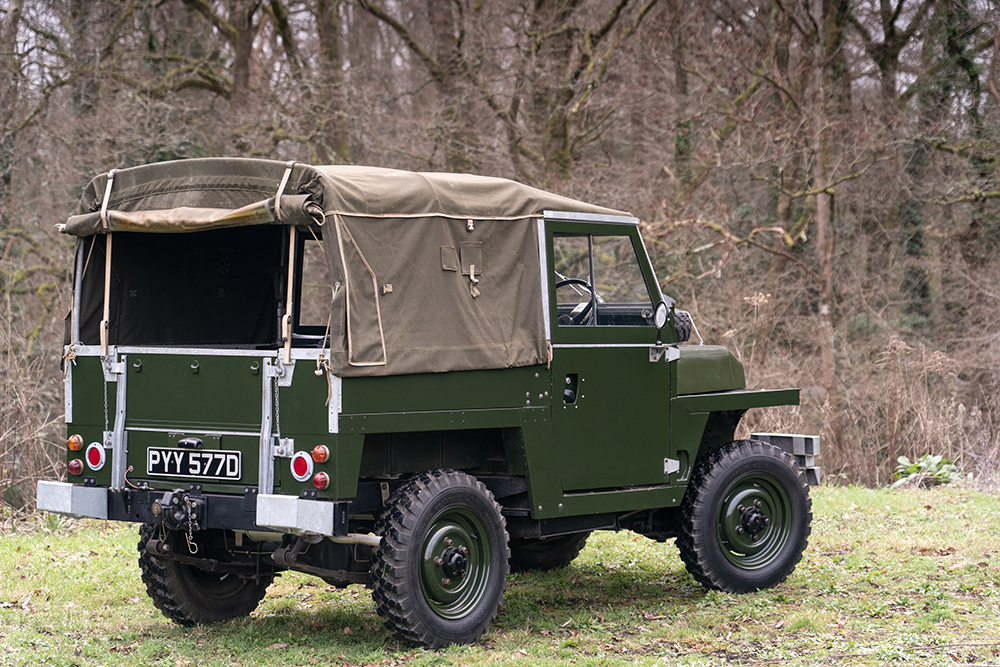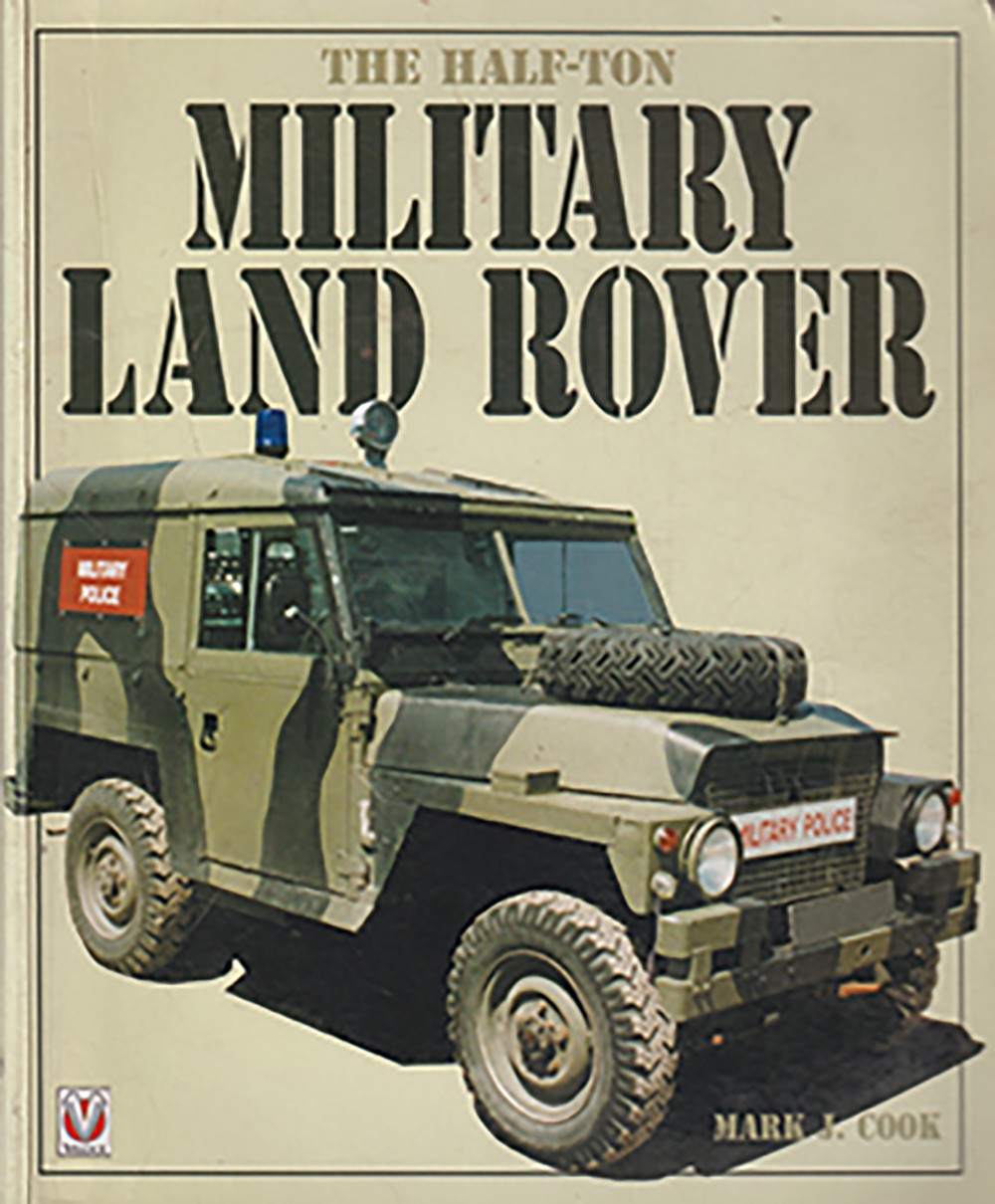11 April 2024
|
Over 30 years ago, Gary drove a Lightweight for the first time and was not impressed. Has time softened his opinion?
I can’t lie. The Lightweight has always been my least favourite Land Rover. And in the early 1990s, when I got to take a rather tatty example for a spin, I concluded that it drove as bad as it looked, particularly on the road. I couldn’t wait to get back behind the wheel of my Range Rover.

Functional and built with a purpose: Could Gary change his mind about the Lightweight?
This somewhat prejudiced opinion has lived with me for the past 30 years, despite the fact that a very popular and tidy example of the Lightweight lives in the Dunsfold Collection. A recent visitor to the Collection’s new museum was Tom, who turned out to be an exceptionally well-informed Lightweight superfan. We enjoyed a very interesting half-hour conversation as we looked around Dunsfold’s vehicle, and Tom’s enthusiasm made me wonder whether I’d perhaps been a bit unfair in my judgement of the Lightweight all those years ago. I decided it was time to reappraise my views. But first, let’s talk Half-Ton history.

Adaptable, Reliable, Fully Air-Portable: Rover’s 1967 ad for the new Half-Ton
Tom pointed out that ‘Half-Ton’ rather than ‘Lightweight’ is the correct name for the vehicle. In official circles, both at Solihull and in the military, it was always known as the Half-Ton. The Lightweight moniker is really a term coined by Land Rover enthusiasts and you can understand why, because the vehicle came into being as a result of the simple fact that in the 1950s, for certain military applications, the standard Land Rover was too heavy: it couldn’t be airlifted by any of the helicopters in operational service at that time.

61 RN 91 was one of the Citroën 2CV pick-ups delivered to the Royal Marines
Tom also reminded me of the astonishing story of a British military vehicle that paved the way for the Half-Ton… The Citroën 2CV pick-up. The Gallic car-for-the-people had been adopted by the Royal Marines because they wanted a tactical vehicle that could be lifted by helicopter from the deck of their assault ships in support of an attack on a land target from the sea.
Following trials in 1957 using Westland Whirlwind helicopters and a standard civilian 2CV pick-up registered 33 CPP, a prototype military pick-up was ordered based on a modified civilian model. This was followed by an initial order for 35 vehicles which were built at Citroën’s UK factory in Slough. The 2CVs set sail on HMS Bulwark in late 1959, accompanied by 42 Commando, destination Singapore.
A second batch of 30 Citroëns was subsequently delivered and served a similar function aboard HMS Bulwark’s sister-ship, HMS Albion, when this vessel was also converted to the commando carrier role in 1961.
The image of Britain’s elite Royal Marines charging into battle in a fleet of 2CV pick-ups is a rather surreal one, even if the little cars were given a military paint job, had all their glass removed, and sometimes had a Mauser 20mm MG151 cannon mounted on the rear load bed.

If there weren’t any helicopters around (above), the Royal Marines discovered (below) they could carry their 2CVs into battle!

According to researcher and author Mark Cook, who wrote The Half-Ton Military Land Rover which is the definitive book on the Lightweights: “The Citroëns were selected principally because of their light weight, front-wheel drive, and basic load carrying capability. Their incredible suspension meant they could withstand repeated helicopter freight release landings from up to ten feet. It was intended that they would be the first vehicles ashore, carrying radio equipment, water, rations, and ammunition.
“The 2CV was chosen because, when stripped, it was light enough to be airlifted by the Whirlwind. However, these vehicles were only to be a short-term measure, for use until the introduction of the Wessex [helicopter]. They were also limited in that they could not carry any significant payload, and they were only 4x2. Despite their limitations, some actually saw service in Borneo during the Indonesian confrontation of 1963-66.”
Suffice to say that the strategic planners in the MoD finally caught up with the pioneering vision of the Royal Marines, and realised that what was required was a vehicle that was not only air portable as an underslung load beneath the newly introduced twin-engined Wessex HU.5 and HC.2 variants, but something that could also be shoehorned into the aircraft of RAF Transport Command and deployed wherever it was needed around the world.
A number of off-the-shelf vehicles were evaluated, including the Hunting Percival Harrier, Haflinger, Mini-
Moke, and Triumph Pony, before Land Rover chief engineer Tom Barton got wind of what was going on and instructed his deputy, Mike Broadhead, to create a product that would meet the MoD’s requirements.

From the archive: prototype with unique grille; VXC 702F was first LHD Lightweight and used as a demonstrator; Rover’s original specification document
It was a bold decision given that at the time the MoD was only considering a modest order to replace the Citroëns, but so keen was Land Rover to maintain its position as a leading supplier to the British military that Barton was convinced it was the right thing to do. Events would prove him right.
A Series IIA 88 was the starting point, and the final result was four inches narrower and around 500lb lighter than the standard military version. The original brief had required the new design to keep as much of the standard vehicle’s components as possible, but in the end the Half-Ton acquired a narrower bulkhead, flat body sides, a narrower track, new drive flanges, and shorter halfshafts.

Why the Lightweight needed to be four inches narrower: Dunsfold’s 21 BT 85 and sister 21 BT 84 squeezed into an Argosy transport aircraft
Weight reduction was also achieved by replacing the front wings with a new design that was little more than a horizontal mudguard. Metal was removed from the rear wings by reshaping the wheelarches to match the front, and the bonnet was completely redesigned. Lighter springs with only four leaves were fitted on the front.
The main way that Rover achieved the required reduction in weight was even more interesting, because the company persuaded the boffins at the Fighting Vehicles Research and Development Establishment (FVRDE) that large parts of the vehicle weren’t really required when it was initially delivered to the battlefield. This so-called ‘demountable’ concept meant that the rear side panels, rear seat, doors, windscreen, soft-top and frame, and front bumper were deemed non-essential and could be delivered to theatre later and fitted when time allowed.
Mark Cook suggests that at least two prototypes were made. They received a favourable reception, and the MoD ordered six pre-production vehicles which were delivered in 1966. Dunsfold’s chassis number 24125945C is the third of these and was built at Solihull on 2 June 1966. It was delivered to the FVRDE at Chertsey on 20 September that year as 00 SP 15, and subsequently renumbered 21 BT 85.

21 BT 85 being put through its paces at the FVRDE
Several photographs exist showing it undergoing trials at the FVRDE and at the Army Air Transport Training and Development Centre at Old Sarum in Wiltshire, where it was used to establish and prove loading methods in various types of aircraft including the Armstrong Whitworth Argosy, the Blackburn Beverley, the Bristol Britannia, the Shorts Belfast, the Hawker Siddeley Andover, and the Vickers VC10. To this glorious list of British-built aircraft was added a Lockheed Hercules, borrowed from the USAF ahead of the delivery of the first of the type to the RAF in December 1966.
It was a vital part of the original MoD requirement that two Half-Ton vehicles should be able to fit side-by-side in the Argosy, and it was this that led to the Half-Ton being four inches narrower than a standard Series IIA.

Dunsfold's Lightweight

Designed to be taken apart and transported quickly and easily
The military service record for Dunsfold’s vehicle reveals that after the FVRDE it was allocated to
3 Battalion, Royal Green Jackets in October 1970, before moving to 1 Staffordshire in December. Early in 1971 it was with 2 Royal Irish before joining 1 Worcestershire & Sherwood Foresters in February 1972. Its final posting was to 1 Queen’s in July 1972, and it was cast a year later and sold at the Ruddington three-day auction held on 13, 14 and 15 November 1973. The Dunsfold archive has an example of the original auction catalogue.

Pre-pro features have survived, including the sidelight and indicator installation

Production vehicles had bonnet-mounted mirrors rather than this design
The Lightweight was registered with the DVLA on 1 October 1974 with the age-related southwest London number GCG 437N and it had four owners before it was acquired by the Dunsfold Collection on 10 June 2008.
“We bought it off eBay from a guy in Trowbridge and I knew that it would require a complete rebuild,” Dunsfold’s Philip Bashall tells me. “The important thing was that almost all of the things that are unique to the pre-pros were intact: all the body panels apart from door tops are different to the eventual production standard, mirrors are on the doors rather than the wings, the bulkhead top is totally different to production, etc. There are dozens of differences to delight the Half-Ton experts.

All body panels apart from door tops are different to production standard

Distinctive rear bumperettes
“We started work on it almost immediately and it passed its MoT in February 2009. One of the things I replaced was the registration number because I didn’t like the age-related 1974 plate and I wanted a D-suffix that would be correct for 1966, when it was built.
“We’d been delighted to help Mark Cook with his book and I was really pleased to discover that he’d found some photographs of 21 BT 85 in the REME Museum and the Airborne Forces Museum, which helped fill in some of the gaps in what we knew about its early history.

Driving position is tight and not really suited to long road trips

Seat cushions use press studs fasteners

Flush-fitting door hinges required to meet width restriction

Dual wiper motors are installed
“We’ve taken it to quite a few shows since it was restored, and JLR hired it for a couple of its events in the 70th anniversary year, when it took part in the World Land Rover Day media drive from Solihull to Ryton. It was also in the 70th anniversary convoy that drove up the hill at the 2018 Goodwood Festival of Speed.”
Tom Barton’s decision to develop the Half-Ton was vindicated when the first order for 92 vehicles for the Royal Marines was placed in August 1967, together with a further order for 1000 for the Army. By the early 1970s the thing that had led to the development of the vehicle in the first place – air portability – became less important as bigger and more powerful aircraft and helicopters were introduced. Nevertheless, the British military fell in love with the Lightweight and continued to order it in large numbers. Eventually, the Half-Ton overtook the standard 88in Land Rover in all three branches of the British Armed Forces.

Dunsfold's Lightweight joined the parade to celebrate Land Rover's 70th birthday

Design of spare wheel retainer was changed for production vehicles

Series IIA powerplant
Lightweights built between December 1967 and March 1972 were all Series IIA models, and those built from April 1972 were based on the Series III. The Half-Ton was gradually superseded by the Land Rover Ninety, and the last were sold off in the late 1990s. They proved to be very popular among civilian buyers when they appeared at MoD disposal sales.
Having taken the trouble to extricate the Lightweight from the museum for our photoshoot, it’s time to get behind the wheel and find out if the passage of time has modified my opinions of it. I’m glad I did, because I thoroughly enjoyed the experience, despite the Arctic temperature. All I can assume is that the one I drove all those years ago was an exceptionally bad example. Either that, or I’ve come over all soft and emotional in my old age.
Dunsfold’s pre-production Half-Ton will be on display at the LRM Live show at Malvern on 18-19 May.
Want to know more?

Search out a copy of The Half-Ton Military Land Rover by Mark J Cook (Veloce Publishing, 2001 and 2004).
Like to have your own Land Rover library?
Try our All-Access Digital Subscription. You'll get access to over 7 years of Land Rover Monthly – that’s more than 100 issues plus the latest digital issue. All issues are fully searchable so you can easily find what you are looking for and what’s more it’s less than 10p a day to subscribe. Click the link above to find out more details and start enjoying all the benefits now.






